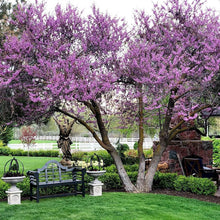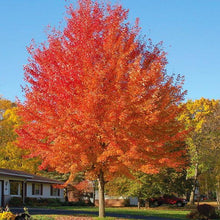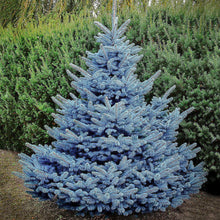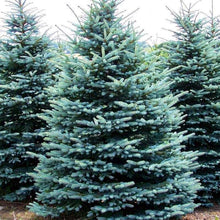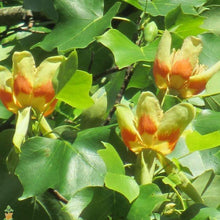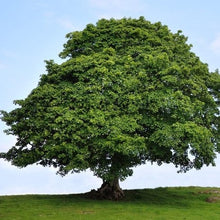Sort by: featured
Category
- Apple Trees
- Arborvitae/Thuja Trees
- Berries
- Best Sellers
- Birch Trees
- Columnar
- Disease Resistant
- Drift Roses
- Dwarf Fruit Trees
- Dwarf Trees
- Evergreen Shrubs
- Evergreen Trees
- Fast Growing
- Flowering Plum Trees
- Flowering Shrubs
- Flowering Trees
- Fruit Trees
- Fruits & Berries
- Gifts for Gardeners
- Ginkgo trees
- Hydrangea Trees
- Hydrangeas
- Juniper Trees
- Knock Out Rose Trees
- Lilacs
- Low Maintenance
- Magnolia Trees
- Maple Trees
- Oak Trees
- Pear Trees
- Poplar Trees
- Privacy Hedges
- Privacy Trees
- Redbud Trees
- Salt Tolerant
- Shade Trees
- Shrubs
- Spruce Trees
- Sycamore Trees
- Thuja Trees
- Topiaries
- Trees
- Willow Trees
Soil Type
When to Plant Trees in Wisconsin
The best time to plant trees in Wisconsin is spring and early fall. Avoid planting in late fall as it will not give your tree enough time to start to establish before harsh temperatures hit. Summer is actually a pretty good time to plant in Wisconsin since temperatures don’t reach above 90 degrees fahrenheit often. Early or late summer is the best time to plant in summer. Just offer plenty of water when summer planting.
What Trees are Native to Wisconsin?
Winsconsin is home to many different types of native trees. The eastern (Canadian) hemlock is a native Wisconsin tree. Some other Wisconsin native evergreen trees are fir, spruce, pine, juniper, and thuja (arborvitae). The American sycamore, river birch, northern red oak, and red maple are native Wisconsin shade trees. Other shade trees native to Wisconsin include ash, birch, beech, maple, and hornbeam. Vermont fruit trees include apple, pear, plum, and cherry trees.
How Many Trees are in Wisconsin?
Wisconsin is a heavily forested state. Forests cover over 17 million acres in Wisconsin. This is almost half of the state. In 2017 the estimated number of trees in Wisconsin was 11.5 billion trees! Maples, oaks, and pines have the largest volume of trees in the state.
When Do Trees Change Color In Wisconsin?
Autumn leaf color changes vary with the type of tree and the climate. But for the most part the timing is dependent on shorter days and longer nights. Deciduous Wisconsin trees begin their color transformation around mid-September. The fall display tends to last at least through mid-October. Fall changes start in the northern part of the state first with the southern part of the state being the last to change. Also, higher elevations tend to change before lower ones.
When To Prune Trees In Wisconsin
A majority of Wisconsin trees should be pruned in late winter or early spring. This includes deciduous and evergreen trees. Wisconsin flowering trees that bloom in spring should be pruned when their bloom period has ended. Trimming off dead, diseased, or broken branches should be done when you notice them. Minor pruning can be done at any time of the year.
Where To Buy Wisconsin Trees
Buy Wisconsin trees for sale online at PlantingTree. We are a family owned and operated online plant nursery. We carry a large selection of the best trees for Wisconsin. Scroll up to view our in stock inventory of Wisconsin trees. Our mature trees are well-branched and ready to plant. Buy Wisconsin trees online and have them shipped right to your doorstep!
When To Tap Maple Trees In Wisconsin
Maple tree sap begins to flow when daytime temperatures are above freezing and nighttime temperatures are below freezing. For Wisconsin trees this is generally in February and/or March. Sap flows for 4 to 6 weeks.
How to Plant Trees in Wisconsin
Be sure your climate and planting site is appropriate for your Wisconsin tree before purchasing it. Water your potted tree well prior to planting. Dig a hole at least twice as wide as the root ball. Place your tree in the hole and check from several angles to be sure it is straight. Avoid planting too deep. The top of the root ball should be slightly higher than your soil line. Backfill the soil and tamp it down gently with your hands to remove air pockets. Water until the ground is thoroughly saturated. Water deeply once per day for the first week. Then 2 to 3 times per week for the next couple weeks. You should water deeply at least once weekly for the first 2 to 3 months while your Wisconsin tree is establishing. Adding a layer of mulch is a great way to keep the soil moist longer. This will reduce watering needs and protect your tree.
For additional options, be sure to browse our online plant nursery.
You May Also Like:


